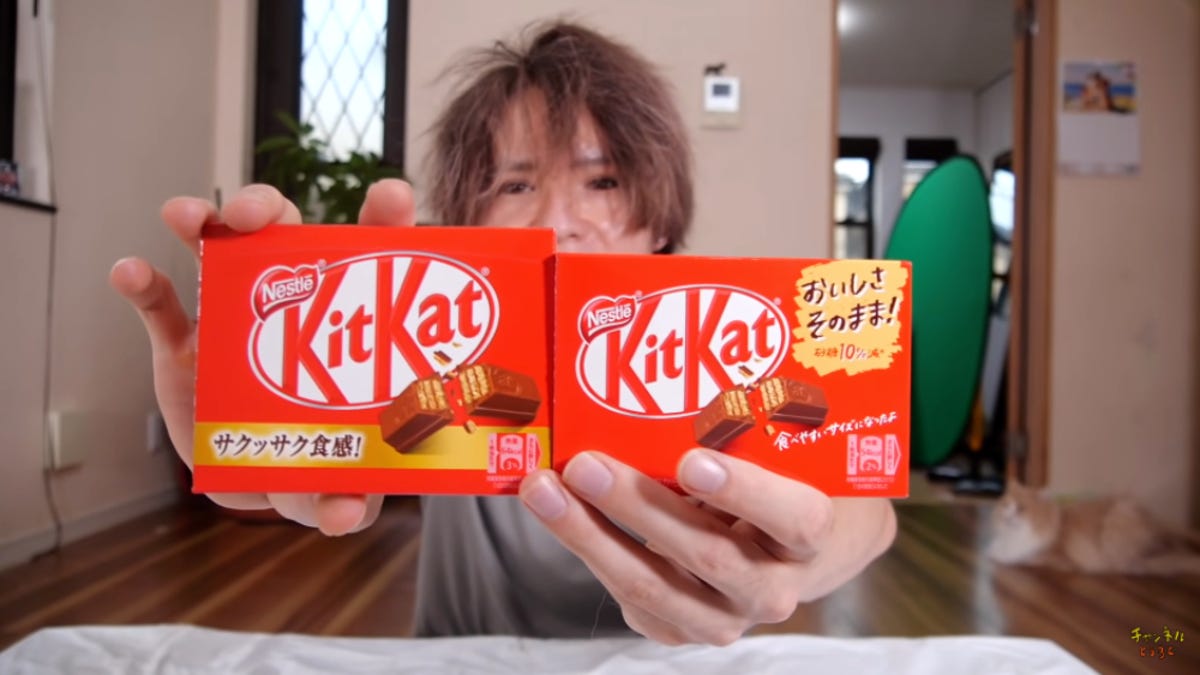
In fall 2020, Kit-Kats were released in Japan at a smaller size. At the time, as YouTuber PDS points out, Nestlé said the smaller size was for customers worried about sugar and calories. Maybe that’s true, but in Japan, snacks have been getting smaller and smaller for years, while prices haven’t changed.
This is what’s known as “shrinkflation,” which is defined as, “a reduction in the size of an item of packaged food, such as a chocolate bar, while the price remains the same.” In short, it means customers are charged more for less. This practice is not unique to Japan (see Toblerone), but it seems especially endemic in the country.
As Reuters reports, there are even blogs in Japan that track shrinkflation. Masayuki Iwasa, who runs the website Neage.jp (“price increase”), got annoyed that one of his favorite treats kept getting shrinking.
“In Japan, the impact of deflation means it is difficult to raise prices directly, so shrinkflation is a kind of a measure of last resort,” Iwasa said. “But basically it’s sneaky and it bothers me.” It bothers me, too! Like, a lot!
Numerous other Japanese snacks have also gotten smaller. Umaibo, the puffed corn snack, have gone from 7~9 grams in 2007 to 5~6 grams in 2010. Dororich, a sweet coffee jelly drink, went from 220 grams at 150 yen for a single serving to 180 grams at the same price, before being discontinued the following year. Calbee will be reducing the contents of its Jagarico potato sticks by 5 percent starting in January 2022, reports Reuters.
A recent Reuters poll shows that increases in raw material costs have meant 14 percent of Japanese companies have passed on these price hikes to consumers. Another 40 percent plan to do likewise in the future.
One of my favorite Japanese snacks is Fujiya’s Country Ma’am cookies. I started eating them over twenty years ago, and over the past two decades, they’ve gotten smaller and smaller. Now, the regular-sized Country Ma’am cookies look like mini versions of their former self. As you can see in the above video, they’re now about the size of an SD Card. (You can see a comparison between the former and current size in the middle of this blog post.)
G/O Media may get a commission
According to the Shrinkflation Wiki, in 2005, one bag of Country Ma’am cost 323 yen (around $3) and contained 30 cookies, with each cookie weighing 11 grams. By 2016, a bag still cost 323 yen, but contained 20 cookies, with a single one weighing 10 grams.
Like with many snacks in Japan, each Country Ma’am cookie is individually wrapped in plastic. For centuries, Japan has had a culture of wrapping (check out Joy Hendry’s book for more). However, in 2021, this does seem rather wasteful for supermarket snacks, and by ditching the excess wrapping, perhaps companies like Fujiya could increase the size of their cookies. Or, they could raise the price.
Easier said than done. Bank of Japan governor Haruhiko Kuroda recently told Nikkei that Japan cannot shake its “deflationary mindset.” When Kuroda, Japan’s longest serving Bank of Japan governor, first took office in 2013, he pledged to increase inflation by 2 percent. Doing so has proven difficult, and it’s still a benchmark that he’s yet to achieve. While nominal wages have increased exponentially in the U.S. over the past two decades, they’ve actually decreased by five percent in Japan. This has not only mean low inflation, but also sluggish economic growth.
Bigger sizes could help stem the deflationary pressures. This year, Nestlé decided to “increase” the size of Japanese Kit-Kats after slimming them down in 2020. The packaging actually advertises the bigger size, which is the first time in recent memory I’ve seen something like that for snack food in Japan. But the new, large size is just a return to the size of Japanese Kit-Kats in 2014, which was a shrunk down version from just years earlier. What’s more, the price of Kit-Kats is still the same and hasn’t changed in two decades.
“As the price of raw materials increases, food manufacturers would like to raise prices but it is difficult for them to do that,” Tsutomu Watanabe, an economic professor at the University of Tokyo, told Reuters. And it’s been difficult for the past few decades.
